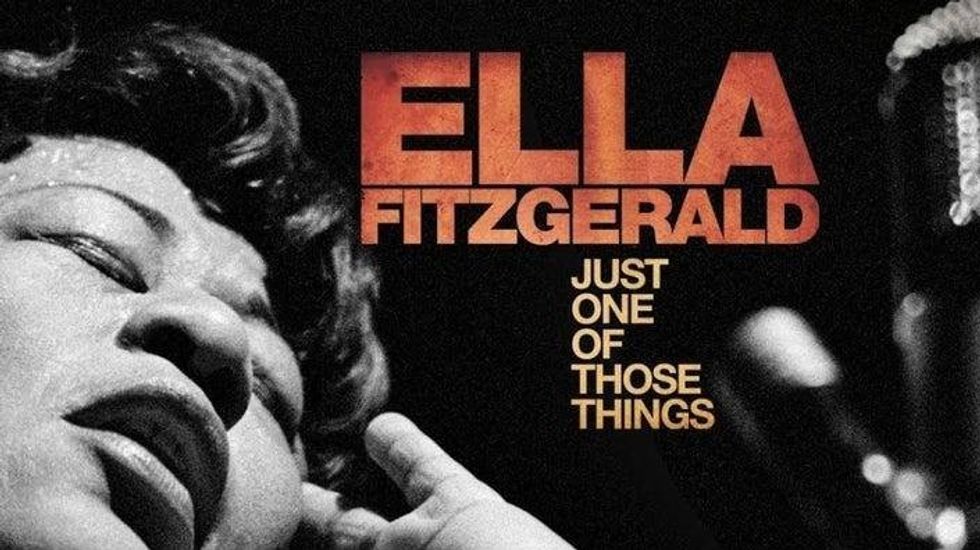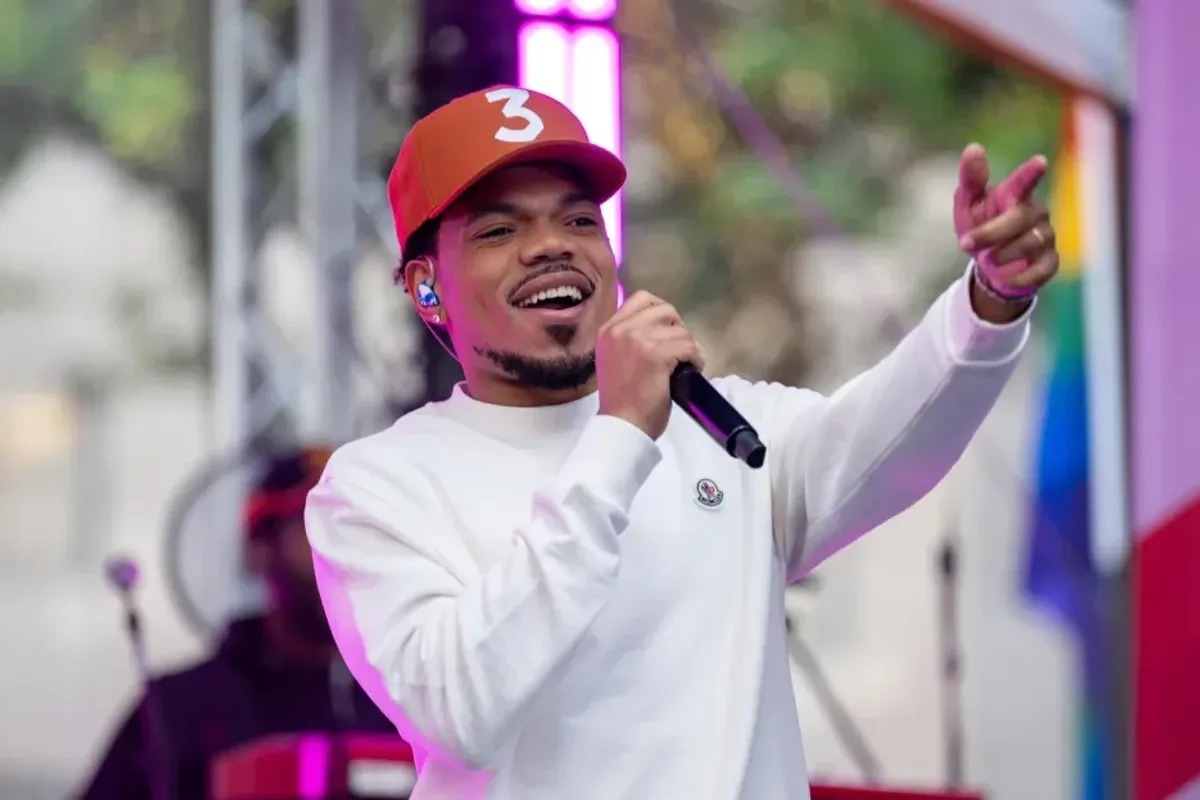A Conversation With .. Reggie Nadelson on Ella Fitzgerald
Hot Docs at Home is now airing a terrific documentary on the Queen of Jazz. Here the film’s writer/producer describes its creation and relates some fascinating stories about Ella.

By Bill King
Ella Fitzgerald – Just One of Those Things – a conversation with writer/producer Reggie Nadelson.
"Ella Fitzgerald was just 16 years old when she won a talent contest at Harlem's legendary Apollo Theatre in 1934. Within months she was a star. Using rare performance footage and images, this new biopic delves into the jazz singer's austere beginnings and rise to fame to tell the story of her life and music. In the face of horrific racism and discrimination, Fitzgerald used her remarkable voice to topple the barriers of her time, becoming one of the leading voices in the civil rights movement. Featuring interviews with Smokey Robinson, Tony Bennett and other titans of the genre, this illuminating documentary venerates the voice that defined—and defied—a century." Hot Docs.
I had the wonderful opportunity to speak with American novelist and producer Reggie Nadelson, known for her mystery novels based around a Russian born, New York City cop, Artie Cohen.
Bill King: You know we're fine with Americans staying put the other side of the border a while longer.
Reggie Nadelson: I bet you are. I'm half Canadian, and that must count for something.
B.K: What do you mean by half?
R.N: I'm not, but my mother was born in Winnipeg.
B.K: There's a lot of people all over from Winnipeg.
R.N: She left as soon as she could. At 17, she was on that train. You say to yourself, New York, Greenwich Village or Winnipeg in the 30s'?
B.K: Let's talk Greenwich Village. I spent two years living there in the '60s and playing piano at Louie Jordan's.
R.N: I remember that. I grew up in the village and went to school there and attended the most left-wing schools in America. There was always a big divide with the folkies who were on McDougall Street with Dylan and others - the jazz lovers hanging at the Village Vanguard, pretending they were 18 when they were 13.
B.K: I remember catching pianist Bill Evans playing "cocktail hour" at the Vanguard.
R.N: His album with Tony Bennett is one of the greatest albums ever made in my view, apart from all of his other recordings.
B.K: The Ella documentary – Just One of Those Things. I was a longtime friend of her publicist, Virginia Wicks.
R.N: She worked out of Norman Granz's office.
B.K: Virginia spoke of Ella's complicated life – the troubled times and successes. What brought you to tell her story?
R.N: I've loved Ella all of my life. When I was a kid, my father took me to an outdoor concert in the city, and Ella was in a blue chiffon dress singing Someone to Watch Over Me – I was hooked. Even though my parents were opera lovers, I grew up listening to jazz. All of those songbooks came into the house.
It was about to be her 100th birthday, and I thought nobody's really done a film. There have been some anodyne pieces, which are just songs strung together. Magically, although documentaries aren't at the top of the list, we managed to raise the money.
She was very, very private and didn't want to give anything away – a very reserved woman. She was of the time. People didn't know Louis Armstrong and his work with civil rights behind the scenes. People didn't talk much. I didn't care in a way, the music was more than enough; still, I thought it would be fun to find out more.
B.K: Going into this, were there things you learned that surprised you?
R.N: One of the things I was very interested in was the whole business about African American women and how hard it was in terms of image. If you didn't look like Lena Horne, you had no chance at all.
Ella was terribly self-conscious about her weight, and people use to make fun of her – in Downbeat Magazine of all places. They thought it was funny she got trapped in one of those cage elevators. Two men had to pull her out. They printed that! She was also leading a band when she was nineteen. She was the leader of twelve full-blown musicians, almost a proto-feminist, but much more tenacious. People thought of her as a polite and reserved middle-aged woman. We found radio interviews she did about civil rights in the south, and she really comes out swinging most respectfully.
After she appeared at the Apollo, she had several horrifying years and was sent to a reformatory for juvenile delinquents. The young black girls were beaten by male staff. She lived homeless on the Harlem streets for a few years. I didn't know any of that. She was probably ashamed of it.
B.K: You read stories of jazz piano great Mary Lou Williams being beaten up on the bandstand and the difficulty having relationships.
R.N: Very difficult. I think in Ella's case, she took very good care of herself. Her first great bandleader Chick Webb, when he was alive, and those that followed looked at her as a sister. They took pretty good care of her. She was kind of a star the moment she joined Chick Webb's band. She was the girl singer, but Chick quickly realized that when Benny Goodman kept trying to steal her away. She never did drugs, never took a drink. Someone insisted she take a drink in a bar and she ordered Manishevitz – she didn't know the name of anything else. She was protected that way but not from racism.
B.K: That must have played out on the road with accommodations, etc..
R.N: Early on, of course. You know all of the famous stories like when Dorothy Dandridge went for a swim in her hotel pool. They drained the pool. Ella somewhat suffered, but she was protected by Norman Granz from the late '40s early '50s. He wouldn't let his artists stay anywhere the white artists didn't stay. When they went to a theatre in the south, he'd take down all of the "whites only" signs and say to the organizers it's either this way or you'll be stuck with two thousand irritated customers because we don't do it that way.
B.K: What was the big break? How did she fare financially?
R.N: Being financially set and making it doesn't necessarily mean being emotional without a history. She debuted at the Apollo in November 1934. She was noticed by a guy named Charles Linton, and he introduced her to Chick Webb, the biggest swing bandleader in Harlem, if not in New York, and he hired her. From that time on, she played the Savoy Ballroom, where all of the famous Lindy hoppers went. When she got up on the bandstand, everybody stopped dancing. She had the ambience, the draw, of a Beyonce or Lady Gaga of today, in very different ways. From the beginning, she was completely magnetic. And very, very cute. She was adorable and could really swing.
B.K: Could she leverage that kind of star power for a decent paycheck?
R.N: She was underage, so Chick Webb and his wife became her legitimate guardians. She had money. She was able to have a room part of the time at a famous hotel called The Woodside, where a lot of musicians stayed. Count Basie wrote a song called Jumpin' at the Woodside. She bought clothes and a fur piece. There's a wonderful photograph not a year after the Apollo where she's on the street in Harlem in a hat, fur and a nice dress putting a coin in a beggar's cup.
B.K: How did she and Louis Armstrong come together?
R.N: I don't know exactly. Ostensibly their managers were forever trying to get them together. They did one concert at the Hollywood Bowl and three recording sessions. Apparently, it was a question of schedules. I don't necessarily believe that. The managers ran everything. It's a great pity; there's no archive and one photograph in which you see a young Natalie Cole. I think it was in the Capitol Records building, and when people heard, they all went running.
B.K: Watching the trailers – the footage pops and catches your attention.
R.N: That's Leslie Woodhead. He did the first film of the Beatles in the Cavern Club and the Tony Bennett doc.
B.K: How was the working relationship? Did you frequent the editing suite?
R.N: I've known Leslie for a long time, and we've done three or four films together - he also did The Stones in the Park, the great Hyde Park concert. Normally, I don't go to the editing room. With this one and because it was my idea – wrote it and did all of the interviews -- I would drop in at times.
B.K: Eagle Rock and a virtual event. When I think of Eagle Rock, I think of packaged historic concerts.
R.N: We went to Eagle Rock because we knew them and that they were starting to do other kinds of music documentaries. I think we walked through the door when they were beginning to do their own stuff. We were ready to go to theatres and were coming to Canada when we got shut down by the Coronavirus. I guess they were trying to think of ways to do it, and the virtual cinema thing was a great way to support local movie houses.
Hot Docs! Presents the Queen of Jazz in Ella Fitzgerald: Just One of Those Things. This title is now available for streaming on Hot Docs at Home

















